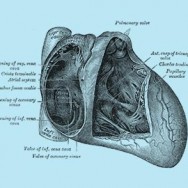
Septal Myectomy for Hypertrophic Cardiomyopathy
Background
Hypertrophic obstructive cardiomyopathy (HOCM) is a disease that causes thickening of the heart muscle. When the muscular septum that divides the right and left side of the heart becomes too think, it begins to block the flow of blood out of the heart to the body, and may cause the mitral valve to leak (regurgitation). HOCM is a genetic disease that commonly runs in families, but can also occur spontaneously in people without a family history. Symptoms include shortness of breath, light-headedness, chest pain, palpitations, and fatigue. It is a common cause of sudden unexplained death, especially in young people.
The operation for HOCM is called septal myectomy. Septal myectomy is performed in patients who have symptoms despite medical therapy, or if the obstruction severely restricts blood ejection from the heart. Patients often experience rapid relief of symptoms after the procedure, and the effects are long lasting.
About the surgery
The heart is accessed by dividing the sternum (breast bone). The patient is then placed on a heart-lung machine so that the heart can be stopped for the operation. A small incision is made in the aorta (the large blood vessel from the heart) so that the septum can be seen from the top-down or at the apex of the heart if the thickening is at this area. Then part of the thickened septum is removed to widen the outflow tract from the left ventricle to the aorta. This eliminates the obstruction and the mitral valve regurgitation that occurs with this condition. Great care is taken to ensure that not too much of the septum is removed, and that the heart’s electrical conduction is not damaged.
Recovery period
For a while after the surgery, patients may feel worse than they did before surgery. This is normal and is usually related to the trauma of surgery, not necessarily to the functioning of the heart. Patients usually stay in the intensive care unit for 1 – 2 days for monitoring, and then in the nursing unit for 4 – 5 days. Two to three tubes stay in the chest to drain fluid from around the heart, which are usually removed 1 – 3 days after the surgery. Full recovery usually takes about 2 months. Most patients are able to drive in about 3 to 8 weeks after surgery. Your surgeon will provide specific guidelines for your recovery and return to work.
Risks of the surgery
There are a number of important risks associated with septal myectomy. If too much of the septum is removed a small hole can be created that allows blood to pass from the left to the right side of the heart. This is called a ventricular septal defect and is similar to the defect that sometimes occurs in newborns. If this happens a small patch of pericardium is used to repair the defect. There is also a risk of some residual mitral valve regurgitation after the operation. The electrical conduction system that controls the heart beat travels through the septum, near the muscle that is being removed. If it is damaged the patient may require a pacemaker to maintain a rhythmical heart beat. The risk of death from the procedure is approximately 1%.
For more information please visit:
Cleveland Clinic Septal Myectomy
Columbia Surgery Septal Myectomy
All patients should consult their cardiothoracic surgeon for specific information about their medical condition and surgery.

